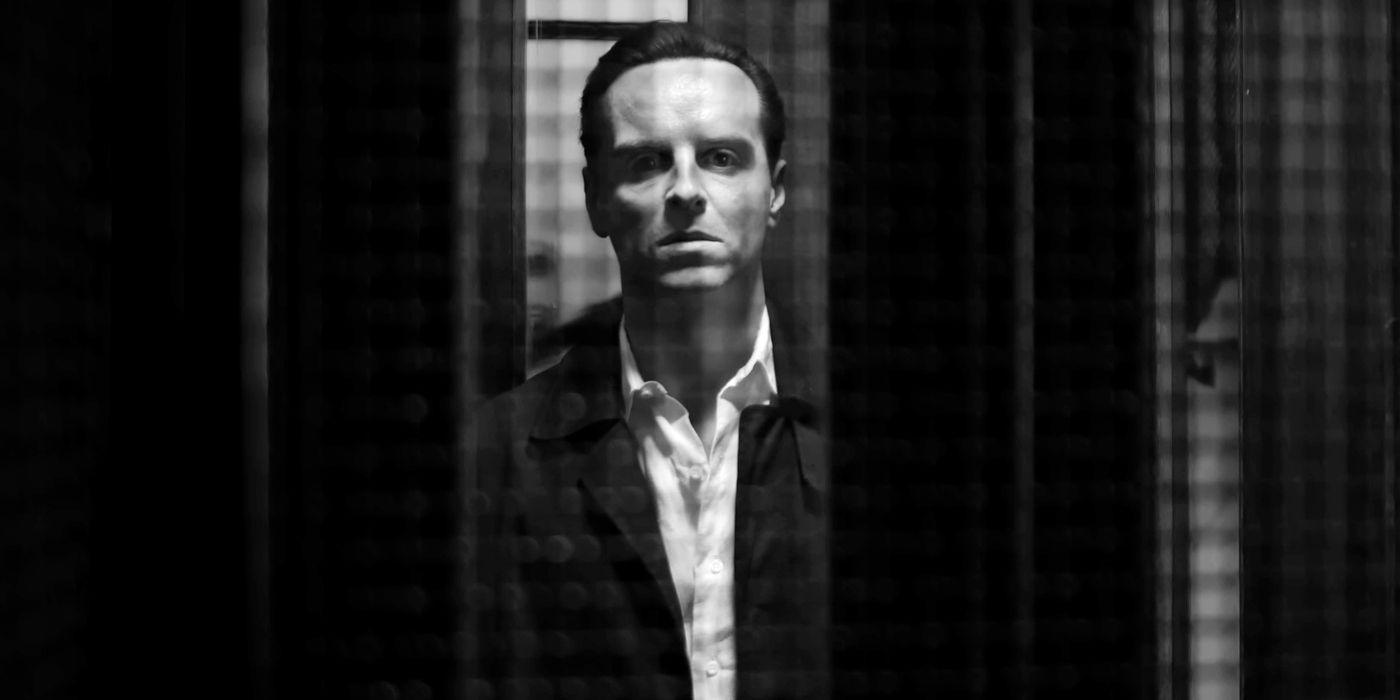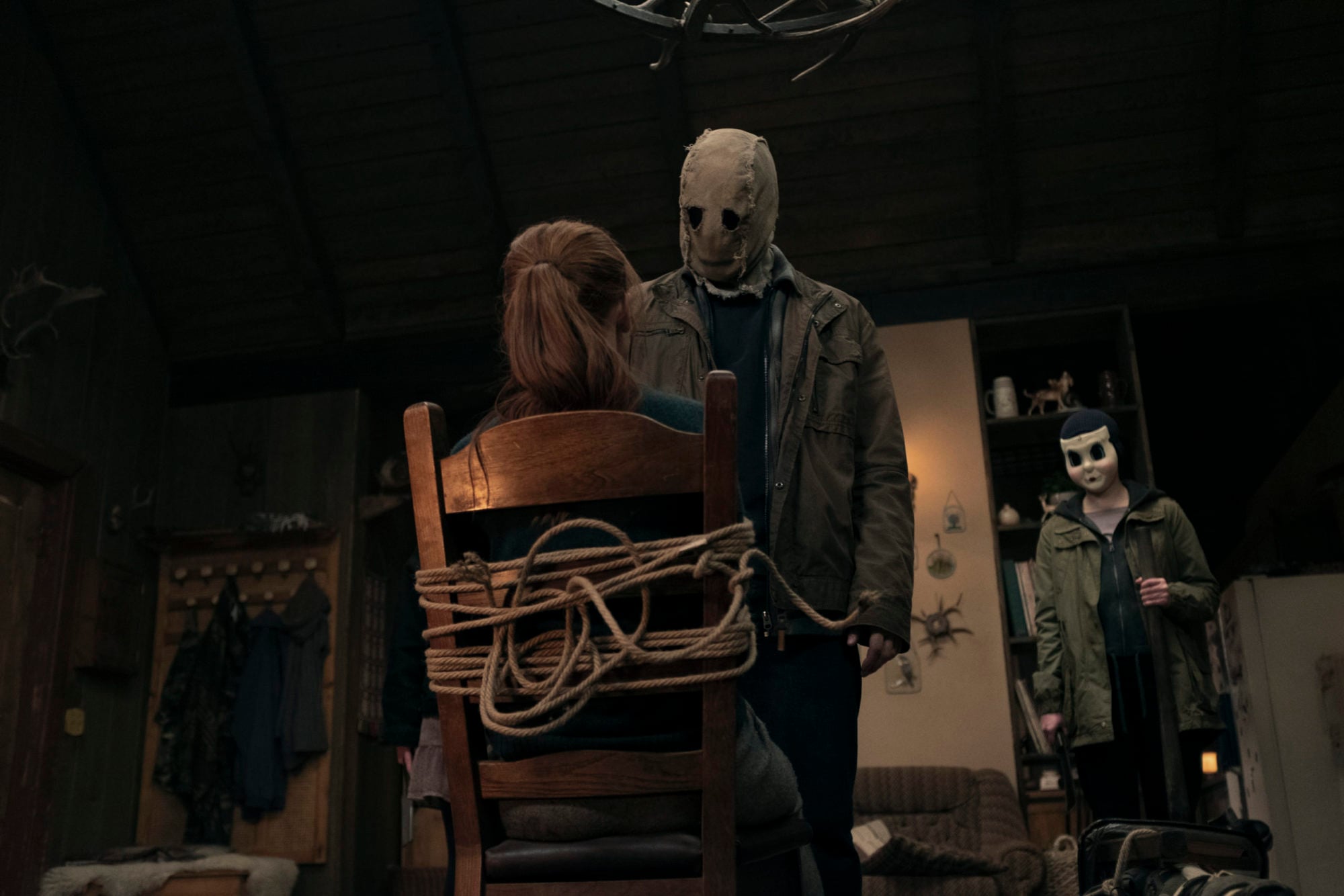Reviews
Netflix’s ‘Ripley’ Series Is a Gorgeous, Methodical Adaptation [Review]

Patricia Highsmith’s 1955 novel, The Talented Mr. Ripley, is a watershed thriller for its critique of class, its queer undertones, and its enduring legacy. The novel inspired multiple sequels, as well as several film adaptations, the most significant of which was Anthony Minghella’s Oscar nominated 1999 film of the same name.
Showtime commissioned a series based on the original book from writer/director Steve Zaillian back in 2021, but the project eventually went to Netflix. Now the eight episode limited series is out in full, and the new iteration is more sumptuous, more faithful to the source material, and more queer (from a contemporary perspective) than any other iteration.

All of Us Strangers’ Andrew Scott stars as Tom Ripley, an unassuming man living in a run-down shared housing project in Manhattan in the late 1950s. He doesn’t have a great deal going for him when he’s tracked down by a private investigator (Bokeem Woodbine) at the behest of Mr. and Mrs. Greenleaf (Kenneth Lonergan and Ann Cusack). They mistakenly believe he went to Princeton with their son and want to hire Tom to travel to Italy and convince their son, Richard “Dickie” Greenleaf (Johnny Flynn) to come home.
So off Tom goes, first spying on Dickie and his girlfriend Marge (Dakota Fanning) before staging an awkward introduction at the beach.
All of this table setting occupies the entirety of the first episode, which is a sign that Zaillian (who writes and directs all eight episodes) is moving at his own deliberate pace. The series is methodical, bordering on laborious, but the performances, Robert Elswit’s gorgeous black and white cinematography, and the increasing tension as Tom’s lies and plans steadily unravel, offsets the slow pacing.

Zaillian’s refusal to rush his adaptation bears fruit in two stand-out episodes – both of which (ironically) focus on murders. In episode three, Tom’s relationship with Dickie fractures and the pair take one final trip before Tom will ostensibly be cut loose. Here the queerness of Tom’s parasitic relationship with Dickie come to the fore as Zaillian includes a key sequence from Highsmith’s book in which the two men have extremely different reactions to a group of gay-coded acrobats performing stunts on the beach.
This brings the sexual tension between Tom and Dickie to a head as they venture out on the open water in a small boat. The long simmering resentment and unsaid frustration prompts each man to lash out – first verbally, then physically – in a more sustained and hurtful fashion than the Minghella feature.
Unlike the feature, however, Zaillian dedicates the entire back half of “Sommerso” to Tom’s disposal of the body and the evidence. It’s a tense, dangerous back half that relies, like so much of the series, on Scott delivering an enthralling solo performance.
It doesn’t hurt that Zaillian is able to expertly wring a great deal of tension out of Tom’s fear of the water, including harrowing moments involving an out-of-control speedboat, Tom’s efforts to sink the boat and his adoption of “Dickie”s identity as his own.

Things reach a new boiling point in episode five with the return of Dickie’s curt and confrontational friend, Freddie Miles (Eliot Sumner, the non-binary child of Sting). Unlike the queer coded performance by Phillip Seymour Hoffman in The Talented Mr. Ripley, Freddie’s gay status is canonical in the series, which lends the series another intriguing avenue with which to explore identity fraud and doppelganger status.
Like episode three, nearly all of “Lucio” is dedicated to the duo, but Zaillian’s insistence on repeated visual motifs (Tom going up and down the stairs; a long haired cat warily observing his passage in shadow; taxis going back and forth, etc.) helps to distinguish the action from “Sommerso.” It also provides a really enjoyable amount of (unexpected) black humour.

Circling Tom like sharks throughout the series is Marge, as well as Inspector Ravini (Maurizio Lombardi), the police officer assigned to the case when “Tom” (Dickie) goes missing after the boat ride. Both Marge and Ravini act as antagonists to Tom’s anti-hero and although Marge isn’t afforded much to do other than act wounded and be suspicious of Tom, Fanning excels at delivering Marge’s barbed accusations. Ravini is more objective, though it is evident early on that he finds “Dickie” (Tom)’s behaviour abrasive and his answers evasive.
Audiences familiar with Highsmith’s source material and Minghella’s adaptation know that the story’s pleasure is derived less from what happens than watching Tom struggle to stay one step ahead while finally living a life of luxury. In addition to the gorgeous chiaroscuro cinematography, Ripley acts as a compelling travelogue of Rome (and later Venice): even when Tom’s palazzo is coated in blood, or the rain washes away evidence on cobblestone streets, the European setting is undeniably beautiful and enticing.
It’s easy to get swept up in Tom’s desire to be part of this opulent world, much of it thanks to Scott’s performance. The Irish actor effortlessly delivers a performance that vacillates between sociopathic, entitled, desperate, and infantile. It’s a cunning balance; one that anchors the slow burn series and sustains it across eight episodes.
For those willing to buy into the fantasy, Ripley is an escapist vacation worth sinking into.


Reviews
‘The Strangers: Chapter 1’ Review – New Trilogy Kicks Off with a Familiar Start

Rebooting and expanding upon Bryan Bertino’s chilling 2008 horror film in a brand new trilogy, all installments already shot as part of one continuous, overarching story, makes for one of the more ambitious horror endeavors as of late. It also means that The Strangers: Chapter 1 is only the opening act of a three-part saga. Considering it’s the entry most committed to recreating the familiar beats of Bertino’s film, Chapter 1 makes for a tricky-to-gauge, overly familiar introduction to this new expansion.
The Strangers: Chapter 1 introduces happy couple Maya (Madelaine Petsch) and Ryan (Froy Gutierrez) on their way to starting a new life together in the Pacific Northwest. Car troubles leave them stranded in the quirky small town of Venus, Oregon, where they’re forced to stay the night in a cozy but remote cabin in the woods.
Naturally, the deeply in love couple soon find themselves in a desperate bid to survive the night when three masked strangers come knocking.

Madelaine Petsch as Maya in The Strangers. Photo Credit: John Armour
Director Renny Harlin, working from a 289-page screenplay by Alan R. Cohen & Alan Freedland that was broken into three movies, keeps Chapter 1 mostly self-contained to recapture the spirit of the original film. The core remains the same in that it’s reliant on the eerie stalking and escalating violence that builds toward a familiar conclusion, but Harlin mixes it up a bit through details and set pieces that hint toward the larger story around Venus itself. The early introductory scenes establishing both the protagonists and their setting offer the biggest clues toward the subsequent chapters, with the bustling diner giving glimpses of potential allies or foes yet to come- like the silent, lurking Sheriff Rotter (Richard Brake).
One downside to announcing this as a trilogy is that we already know that the successive chapters will continue Maya’s story, robbing more suspense from a film that liberally leans into its predecessor for scares. The good news is that Madelaine Petsch brings enough layers to Maya to pique curiosity and instill rooting interest to carry into Chapter 2. Maya begins as the gentler, more polite half of the young couple in love, but there’s a defiance that creeps through the more she’s terrorized. On that front, Petsch makes Maya’s visceral fear tangible, visibly quaking and quivering through her abject terror as she attempts to evade her relentless attackers.

The Strangers – Chapter 1. Photo Credit: John Armour
It’s her subtle emotional arc and quiet visual hints toward the bigger picture that tantalize most in an introductory chapter meant to entice younger audiences unfamiliar with the 2008 originator. The jolts will have a harder time landing for fans of Bertino’s film, however, even when Harlin stretches beyond the cabin for stunt-heavy chase sequences or gory bursts of violence. It’s worth noting that Harlin’s tenured experience and cinematographer José David Montero ensure we can grasp every intricate stunt or chase sequence with clarity; there’s no worry of squinting through the dark, hazy woods to make out what’s happening on screen. A more vibrant color palette also lends personality to Venus and its residents.
The Strangers: Chapter 1 exists in a unique place in that it’s the first 90 minutes of what will amount to a roughly 4.5-hour movie yet doesn’t give much away at all about what’s ahead, presenting only part of the whole picture. Chapter 1 does a sufficient job laying the groundwork and delivering horror thrills but with a caveat: the less familiar you are with The Strangers, the better. Harlin and crew get a bit too faithful in their bid to recreate Bertino’s effective scares, even when remixing them, and it dampens what works. The more significant departures from the source material won’t come until later, but look to a mid-credit tease that sets this up.
The Strangers: Chapter 1 doesn’t establish enough of its own identity to make it memorable or set it apart, but it’s just functional enough to raise curiosity for where we’re headed next.
The Strangers: Chapter 1 releases in theaters on May 17, 2024.














You must be logged in to post a comment.